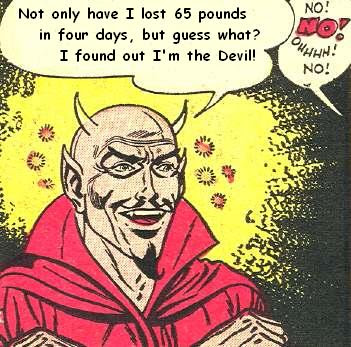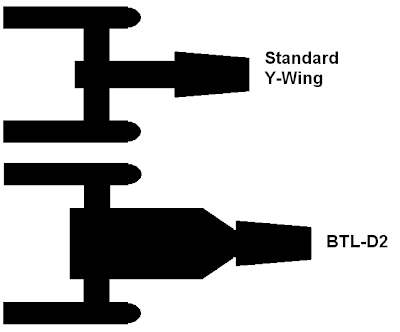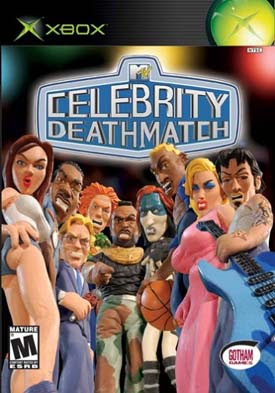10. The Cover
When you look at this cover, what kind of game do you imagine underneath it? Some sort of horror comedy romp, perhaps? Instead you get one of the most whacked-out D&D variants I have ever seen. In fact, I would go so far to say that this cover is so inappropriate as to somehow be a transcendentally perfect match for the insane contents.
9. Mystery Author
Look back up at that cover for a sec. Notice that it says "by Dragon's Byte". If somewhere in the text there's a clue to the identity of this mysterious entity, I have yet to find it. My buddy Pat proposes that the game could be a group effort by an old BBS. Some Googling turned up a Dragon's Byte BBS in Salinas, California run by some dude named Ric Vittum and another such operation out of San Francisco adminned by a 'WildCat'. There was Sheboygan 'Dragon's Byte' BBS as well. Any readers remember any of these BBSes? UPDATE: James Mishler reports that none of these BBSes were the Field Guide's authors.
8. Woeful IncompletenessStarting as early as Dave Hargrave's excellent Arduin Grimoire the hobby has a tradition of trying to pass off D&D house rules as a complete RPG. But for a game that encompasses two 110 page volumes, the Field Guide has some pretty glaring holes. Nowadays you can maybe get away with publishing an RPG with no equipment list, but back in '82 that was a pretty big deal. And I'm baffled by the lack of any spells. The chargen section is chock full of strange spellcasting classes, but there's no spells for them to cast! I cast nothing in particular at the darkness!
This product was originally advertised as the Marvelous Mystic Missive of Mighty Meek and Magical Monsters, though it was never published under that name. I suspect that what started purely as a monster book (volume 2 is little more than 600 monster entries) was expanded at the last minute into a full-fledged RPG. Except someone along the way forgot that a complete game needed to be, well, complete.
7. Play a Bear!
Many of the nearly 200 insane PC races in Volume 1 of the Field Guide are drawn from various bodies of myth. One of those sources is the folklore of the Blackfoot tribe of Native Americans. Apparently their mythology ascribes humanlike intelligence to bears. So you can play an absolutely ordinary bear with a standard adventuring class like wizard or acupuncturist (see below). Here's a hint: don't choose a class that relies heavily on weapon or tool use.
6. Random Levels
For random NPC generation you roll d100,000. NPCs are first level only on a roll of 00001 to 00011. Rolling a 99,992 or higher gets you a 17th level NPC. Most NPCs are 4th level, because any roll of 27,282 to 63,642 gets you that result. I love this chart. I want to use it in other class and level games. Hell, I'm tempted to let my players roll on this chart for replacement PCs in my current 3.5 game.
5. Kitchen Sink Classes
Every good gonzo D&D variant has a wild assortment of nonsensical classes and Field Guide to Encounter is no different. Let's just run down the list quickly: Acupuncturist, Amulet Maker, Astrologer, Bard, Cleric, Crimson Seeker (a psi warrior type), Demonist, Druid, Elemental Wizard, Fighter, Frost Wizard, Geo-Sage, Healer, Historian, Houri, Kabbalist, Magus, Martial Artist, Merchant, Necromancer, Ninja, Ronin, Sailor, Shadow Walker (psi thieves), Shifter, Smithie (elemental wizard/warrior hybrid), Thief, Tracker, [Animal] Trainer, Translator, Venefic (assassin), Warrior (a fighter who specializes in brute force even more than a regular fighter), White Wanderer (psionic/wizard hybrid). Whew!
4. "Ints"
Some games use a specific term to refer to all intelligent species. I like "peoples" or "folk" in fantasy games. Traveller uses "sophonts", which sound cool. Field Guide to Encounters uses "Ints", which is short for "intellgent species". That term trips me up every time I encounter it.
3. Manitou Combat
"Manitou Combat is a form of mental combat where the souls of two people actually engage each other on a slightly higher plane. During the combat, the two combatants' bodies remain rigid and neither will move until the battle is over."
In my mind's eye this plays out the way Professor X sometimes throws down with fellow psychics. Astral bodies, invisible to others, conjure up ectoplasmic weapons and armor and knock each other around. The absolute coolest thing about Manitou Combat, apart from the name, is that anybody can be taught to use this exotic fighting method. Two Historians arguing over 3rd century doily design could take their argument to the astral plane.
2. Mandatory Apotheosis
Two classics in the field of gonzo gaming, SenZar and World of Synnibarr, make achieving godhood one of the major goals of play. At least one PC achieved demigod status in Hargave's original Arduin campaign. All of these games (and the less gonzo but still awesome Mentzer version of D&D) make becoming a god an epic adventure, possibly the most difficult adventure of your PC's career.
Field Guide to Encounters, on the other hand, posits godhood as a natural consequence of standard D&D type play. When you achieve 20th level your are summoned by the gods and offered a position in their ranks. PCs not wanting to become gods must talk their way out of the honor. Why would you want to do that? Because the influx of deific energies kills 95% of new recruits. The survivors may then pick out their own sphere of influence and join the ranks of the gods. The text notes that the gods settled on this form of conscription as a way of replenishing their ranks. It seems that high level adventurers would eventually make their kind extinct otherwise.
The only other game I know that does forces godhood upon successful PCs is Lords of Creation. LoC doesn't use the term 'god', but the whole PC advancement system is basically a low burn to deific power. Field Guide is much more abrupt and jarring. One day you're a 19th level Translator and a few xp later you're either dead or a newly minted god.
1. Killer Breakfast
Field Guide to Encounters has one of the greatest/craziest monster sections in RPG history, ranking right up there with World of Synnibarr and Element Masters. The lion's share of volume 2 is dedicated to the monsters, at eight critters to a page for 76 pages! Each one gets its own little illo, too. Many of these creatures are standard fantasy fare, most of which are attributed to various mythologies or fantasy novels.
But a not insignificant fraction of the included monsters are just plain crazy-go-nuts. There's the "Car-Rot", a golem carrot that will stab you with it's pointy end and inflict a rotting disease. And 2 meter tall living cigarettes that do d8 damage by blowing puffs of smoke at you. And giant coffee cups that burn their victims by pouring out their contents. Then there are the Tinkles, a class of monster that generally looks like a Tribble with little eyes. They come in a bewildering number of equally crazy variants. The Shoo Monster is a harmless relative of the Intellect Devourer. It has no attacks and leaves whenever someone says "shoo!" to it. And then there's the Toast. Imagine a piece of toast 2 meters tall, with arms, feet, and a little face. Burnt Toast is given its own listing. It's AC is better than regular toast.
Martinglass on the Judge's Guild message boards rightly asks "Do people WANT to see Conan fight breakfast foods armed with tridents?" Now, I wouldn't want to read a Robert E. Howard story where something this stupid goes down. But in a roleplaying adventure? Hell yeah!
![[insert Python lumberjack reference here]](https://blogger.googleusercontent.com/img/b/R29vZ2xl/AVvXsEhdMic4LxeblvxNog-OVSMvB26FiIRyD8-kmo_GknNZLYv481rHIk562ZNmankPBjcOKJifi_1OORECSruHymlLkrlIbJDQc3-IW834rKJtqj-HB4d5MowOWRYenGXXFHKC2joRDA/s400/guildad1.PNG)
























































.png)
























































































































.JPG)





































.png)

.jpg)





















.gif)






